How to independently remove a tick without harm to health
Content:
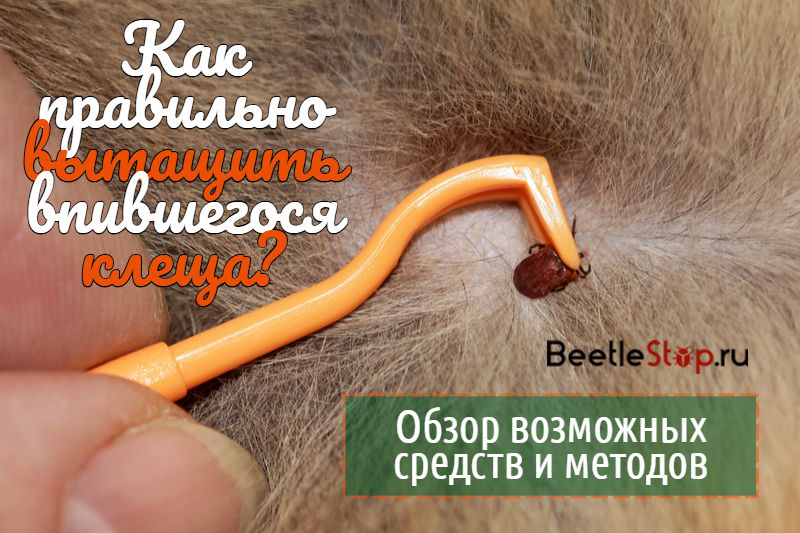
As soon as warm days come and the sun warms up, ticks wake up. They are waiting for us everywhere - in the park and garden, in a bouquet of wildflowers and in the middle of the metropolis. Therefore, each person should know how to pull out a tick if he is "lucky" to meet him. Such information is especially useful for hunters, mushroom pickers and fishermen, and simply for hikers - that is, those who often find themselves far from civilization. In this case, travelers will have to rely only on themselves.
If a tick bit - the first steps
Bloodsuckers are inherently sedentary creatures. Parasites do not know how to jump from branch to branch and climb trees. Yes, they do not need it. Having taken a wait-and-see position in dense grass or shrubs, the tick easily finds a victim. Due to their high susceptibility, bloodsuckers feel the approach of a hunting object for 8-10 meters. In preparation for an attack, they raise their front legs and quickly catch on to their clothes.
Once on the body, ticks can crawl for hours and seek out the most successful, from their point of view, place for a bite. If you examine yourself at least once an hour, it is quite possible to detect a parasite even before it cries into the skin.
Tip. Particular attention should be paid to the armpits, auricles, neck, stomach and inguinal zone. These areas with the thinnest skin and a large number of blood vessels are especially like the tick.
If the parasite could not be detected on time, and it has already sucked, you can not crush the bloodsucker on the skin or try to tear off. If the tick is infected, the infection will still enter the body through the wound and microcracks on the skin. In addition, you will destroy the object of study, which relies on passing on analysis.
In this case, you should contact the nearest emergency room as soon as possible to receive medical care. If this is currently not possible, you should try to independently extract the bloodsucker using improvised means. In this case, it is advisable not to tear it and pull it out alive.
What should not be done
Seeing a sucking tick, people often panic and try to get rid of it as quickly as possible, without thinking about the consequences. Therefore, it will not be superfluous to recall that not all methods are good for removing the parasite. Consider several points that will not be useful when trying to pull out a tick:
- squeezing a bloodsucker;
- picking out with a sharp object and other traumatic actions;
- cauterization by fire (match, cigarette);
- lubrication of the tick with alcohol, gasoline, nail polish and other similar substances.
Attention. The latter method is dangerous because under the influence of aggressive fluids that threaten life, a tick can relax the proboscis and all the blood, along with the causative agents of the disease, will be injected back.
There are several methods for extracting a bloodsucker, but not everyone knows about them. Therefore, below we offer to get acquainted with the safest and most effective of them.
Tick extraction methods
So, how to remove the tick yourself without harming yourself and saving the parasite for research? In principle, every adult should be able to extract a bloodsucker, because no one is safe from his attack. With a bite, you can’t hesitate and hesitate, as well as rushing. In either case, the consequences can adversely affect the health of the victim.
It is especially difficult to draw out small ticks that have not yet drunk blood and have not grown sufficiently. In this case, you will have to especially try and act very carefully and slowly.
Hand extraction
The first thing that comes to the head of a tick victim is simply to pull it out with your hands. The method is quite risky and may result in tearing of the parasite. In this case, infection becomes most likely. However, if there is nothing suitable with you, you can resort to this method.
For the procedure to succeed, you must follow a few rules:
- It is advisable to wrap the fingers with a bandage or handkerchief. So it will be easier to keep the bloodsucker.
- The tick should be captured near the skin itself, in the place of its contact with the head.
- It is recommended to remove the parasite by rotating it counterclockwise slowly and carefully, being careful not to break it.
- After removal, the wound must be treated with an antiseptic or rinsed with water.
The tick should be placed in a container with a tight lid and taken to a study to identify pathogens.
Tweezers removal
A similar method is convenient for the early detection of a parasite, when it has not yet reached large sizes. The rules for extracting the tick with tweezers are similar to removing them with your hands. Bloodsuckers are also captured from the skin itself and twisted together with the head with rotational movements. In this case, it is recommended to keep the tweezers strictly parallel or perpendicular to the skin.
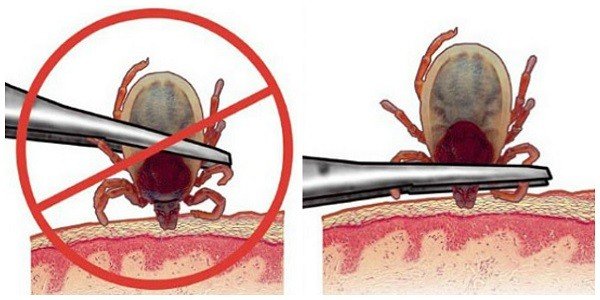
The tick should not be pulled or pulled heavily. In the event of a break, you will have to remove the head, and this is a rather unpleasant procedure, often requiring the help of a physician.
Tip. Today in pharmacies you can freely purchase special tweezers to remove bloodsuckers. Such a device should be in every home.
If the parasite cannot be stored for subsequent analysis, it must be destroyed by drowning in boiling water or wrapped with paper and burn.
Thread Extraction
Probably the most popular, but also the most time-consuming way. It requires some dexterity and skill. Convenient for removing large ticks. To get a good result, you must fulfill several conditions:
- The thread should be strong and not too thick.
- The loop is made at the very base of the sucking parasite.
- Removal is made by rotational, loosening and sipping movements.
With certain skills and not too small ticks, a bloodsucker can be quickly pulled out with a thread without damaging it. The method is good if there are no tweezers at hand, and the hospital is far away.
Set for twisting ticks
Modern pharmaceuticals do not stand still. Today, pharmacies can offer a special device for removing parasites, greatly simplifying the process. The kit includes two twists - large and small, for ticks of different sizes.
The device has several advantages over tweezers. Firstly, the tool does not squeeze the bloodsucker, which significantly reduces the risk of damage, and, secondly, allows you to capture the parasite close to the skin, making it easier to remove. The wringer is very convenient and functional, so doctors strongly recommend having such a set in your home medicine cabinet.
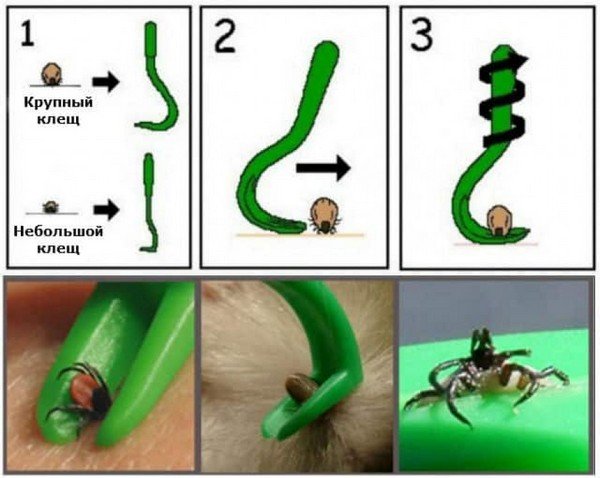
The kit includes a tube in which it is recommended to place the extracted bloodsucker for subsequent transfer to the laboratory.
Syringe Removal
There is another interesting way to extract the tick - using a syringe. For its implementation, several simple actions should be performed:
- Take a small syringe (insulin or 3 cm³).
- Carefully cut off the part with the spout with a knife.
- Moisten the skin around the tick with water and squeeze the syringe firmly.
- Slowly raise the piston upward, creating a vacuum. As a result, the parasite gradually stretches out.
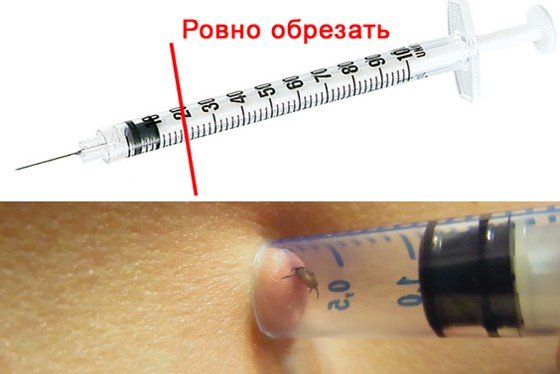
After extracting the parasite, a small bruise may remain, which will quickly pass. The bite site must be treated with an antiseptic or rinsed with water.
You should not rely on this method especially. It is effective only if the tick has not had time to penetrate deep into the tissue. With a long stay of a bloodsucker on the body, it is better to use a more reliable method.
Parasite Extraction Oil
There is an opinion that if you grease the tick with oil or fat, it will suffocate and itself will disappear. It is clear that people frightened by encephalitis are ready to believe in anything, just to get rid of the bloodsucker, but in this case this method will not help. The parasite will not suffocate and will not creep out. It is a myth.
Attention. Waiting until the tick dies, you will lose precious time, and you can not hesitate with a bite. It can cost not only health, but also life.
In addition, the oiled parasite will not be suitable for serological studies. Therefore, the victim after removing the bloodsucker will have to carefully monitor his health and hope that the tick was not sick. This method also has other disadvantages:
- after contact with oil or fat, the tick may die in the human body and will have to be removed in other ways. Most likely, it will not work to get it in its entirety;
- dying, the parasite spills blood with infected saliva back into the wound, which significantly increases the risk of infection.
Therefore, do not use oil and other fatty substances to remove bloodsucker. There will be no benefit from this, and considerable harm can be done.
If the tick is not fully removed, what should I do?
Often a person who first encounters a tick begins to panic and get nervous, as a result of which, when removed, it breaks the bloodsucker. A severed head continues to infect the victim, since it is in the salivary glands that the maximum concentration of the pathogen is found.
You can try to pull out the tick head at home. To do this, it is necessary to treat the affected area of the skin with iodine to prevent further infection. Then take a regular sewing needle, sterilize it and carefully remove the head, like a splinter.
Tip. After the procedure, the wound should be thoroughly disinfected again and wash your hands well with soap and wipe them with an antiseptic.
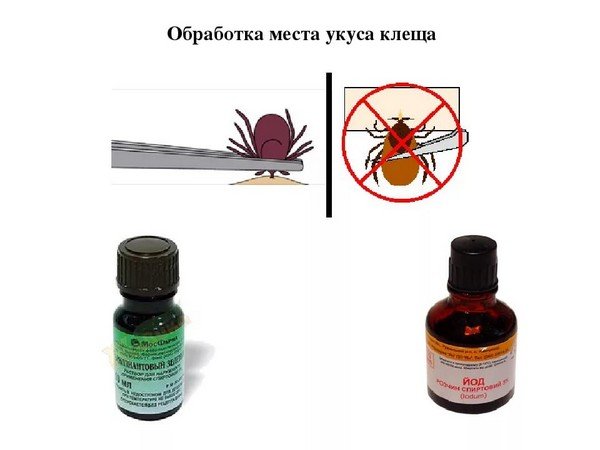
Since the mite could not be kept alive, it is necessary to attribute to the analysis what remains of it, although the reliability of the results in this case decreases. Therefore, in parallel with the study of the parasite, it is recommended to donate blood for encephalitis and Lyme disease. This will help to timely identify the disease and begin treatment. In addition, it is necessary to carefully monitor the state of health and, if symptoms of infection appear, immediately consult a doctor.
Given all of the above, to extract the parasite, you should choose methods that will quickly remove the bloodsucker without damaging it. It is very important to keep him alive for research.


 (votes: 10, average rating: 4,10 out of 5)
(votes: 10, average rating: 4,10 out of 5)
... You won’t understand for all of you ... Some say one thing, another ... the other day I pulled out ticks ... one day one another another ... and the doctors themselves said that there was no Zelenka and food